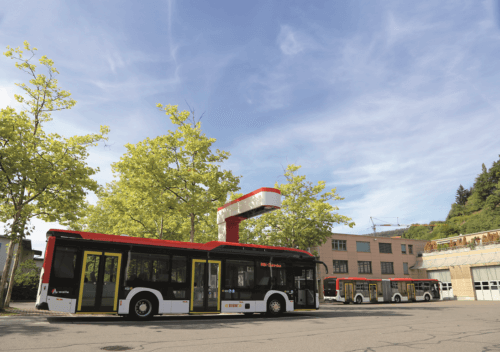
Jonathan Welch pays a visit to Swiss operator RVBW to find out how about its route by route electrification programme and experiences with Scania’s Citywide BEV electric bus
On my recent trip to Switzerland, I was invited by electrification specialists Furrer+Frey to view another of its charging stations, this time including its roof-mounted pantograph option, as well as have a look at the Scania Citywide BEV – a type as yet unavailable in the UK, though look out for a full test drive in a future issue.
Having spent most of my career in and around the coach and bus industry, and possessing a curious mind that likes to look behind closed doors, it’s always interesting to visit new operators and see how things are done; even more so in a country like Switzerland, which is often regarded by those elsewhere as the vanguard of public transport. As a keen traveller too, it means I often find myself in places I might not otherwise have visited, and so it was that on a fine morning in late August, I arrived at the smart headquarters of RVBW, Regionale Verkehrsbetriebe Baden-Wettingen, in the town of Wettingen.
There are of course a lot of similarities, and many facets of the operation will be familiar to British eyes. RVBW in its current form was founded in 1970, and is owned by the local communities it serves, a not-uncommon model across much of Europe. Operating a total of 109 route-kilometres across 12 routes, the company has a fleet of 63 buses. Just 19 of these are 12-metre single-deckers, the remainder 18-metre articulated buses, something which would be unthinkable in the anti-artic UK, especially in a relatively small town.
[…]By subscribing you will benefit from:
- Operator & Supplier Profiles
- Face-to-Face Interviews
- Lastest News
- Test Drives and Reviews
- Legal Updates
- Route Focus
- Industry Insider Opinions
- Passenger Perspective
- Vehicle Launches
- and much more!


